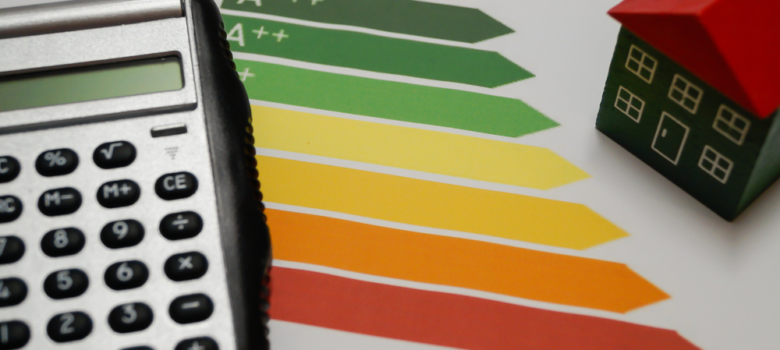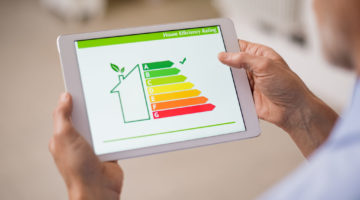
The Minimum Energy Efficiency Standards( MEES) are pretty simple; if you are a landlord who is responsible for letting properties in England or Wales then you need to ensure that the Energy Performance Certificate (EPC) asset score of your rental property is at least an E. This is true of commercial properties just the same as domestic.
What this essentially means is that non-domestic properties with an EPC score of G or F will come off the market, unless they are brought up to standard (EPC score of E or better) or have been granted an exemption. This goes for both new leases and lease renewals, and it’s serious business – non-compliance can lead to landlord fines of up £150,000.
London-EPC guiding our customers through non-domestic minimum energy efficiency standards or MEES
Having been in the non-domestic/commercial sector of EPC’s and energy saving matters, we offer our unique and practical perspective on the MEES that are applicable in the Private Rental Sector (PRS). Not only do we offer our own take on the regulations themselves, we offer businesses or the non-domestic sector additional insight on the current asset ratings or EPC scores and what they mean in light of the regulations that came into play from April 2018.
If your business is in the Greater London area and you’re looking to get a commercial EPC filed, please fill out the form below and we’ll be in touch.
How did non-domestic minimum energy efficiency standards (MEES) come about?
Originating from the Energy Act 2011, in 2015, the Energy Efficiency (Private Rented Property) (England and Wales) Regulations were introduced for private rented properties. The aim of these regulations were to establish a minimum level of energy efficiency for privately rented properties in England and Wales. A set of amendments were introduced in 2016 to take into account the exemptions register.
In the narrative that preceded these regulations was based on the notion that buildings are a major contributor to Greenhouse Gas emissions, and standing by doing nothing may pose a massive threat to the UK not meeting its 2020 and 2050 carbon reduction obligations. According to independent studies, 18% of commercial properties hold the lowest EPC ratings of F or G in the UK. The non-domestic energy efficiency standards (MEES) are there to ensure these poorly performing buildings are brought up to a certain standard of efficiency. New buildings will not be under the remit of these standards as new build commercial properties already incorporate a high level of energy efficiency in construction.
The set of regulations in the Energy Efficiency (Private Rented Property) (England and Wales) Regulations 2015, incorporate both domestic or non-domestic, but as mentioned in this article we only focus on business or non-domestic. Both domestic and non-domestic regulations are underpinned by the same principles of helping achieve minimum energy efficiency standards in private rented buildings, but each have a set of implementation criteria, which slightly differ from one to the other.
What is a non-domestic Energy Performance Certificate (EPC)?
Carrying out an EPC on your business will measure the energy efficiency of the commercial property that you operate from. A qualified non-domestic energy assessor would come to the property and carry out a detailed survey. The surveyor will look for things like heating systems, insulation and the effectiveness of windows and doors at blocking draughts and the resultant degree at which the internal climate is maintained. Upon completing the survey and studying any other relevant building services information, the property is then given a rating between A and G.
Unlike a domestic property, the commercial EPC process has an additional degree of difficulty. The whole process normally only takes a couple of hours, though it can be more if there are unusual or difficult to assess features.
The more efficient the property, the earlier in the alphabet the letter you are given. A report is issued alongside, which gives suggestions on how to improve your rating. These could include low cost measures such as switching to LED lighting, installing more loft insulation or getting smart heating controls. Pricier measures could include getting a new boiler, double glazing or having external wall insulation fitted.
Who will enforce the new non-domestic energy minimum energy efficiency standards (MEES)?
Local weights and measures authorities will enforce the minimum standards. They may check whether a property meets the minimum level of energy efficiency, and may issue a compliance notice requesting information where it appears to them that a property has been let in breach of the Regulations (or an invalid exemption has been registered in respect of it).
Where an enforcement authority is satisfied that a property has been let in breach of the regulations, it may serve a penalty notice on the landlord imposing financial penalties. The authority may also publish details of the breach. The landlord may ask the enforcement authority to review the penalty notice and where it is upheld on review, the landlord may then appeal the penalty notice to the first-tier tribunal.
Think we missed something? Do you have a different opinion?
Comment below to get your voice heard…













Do you provide ECPs for commercial properties in the Fulham area? If so please get in touch ASAP